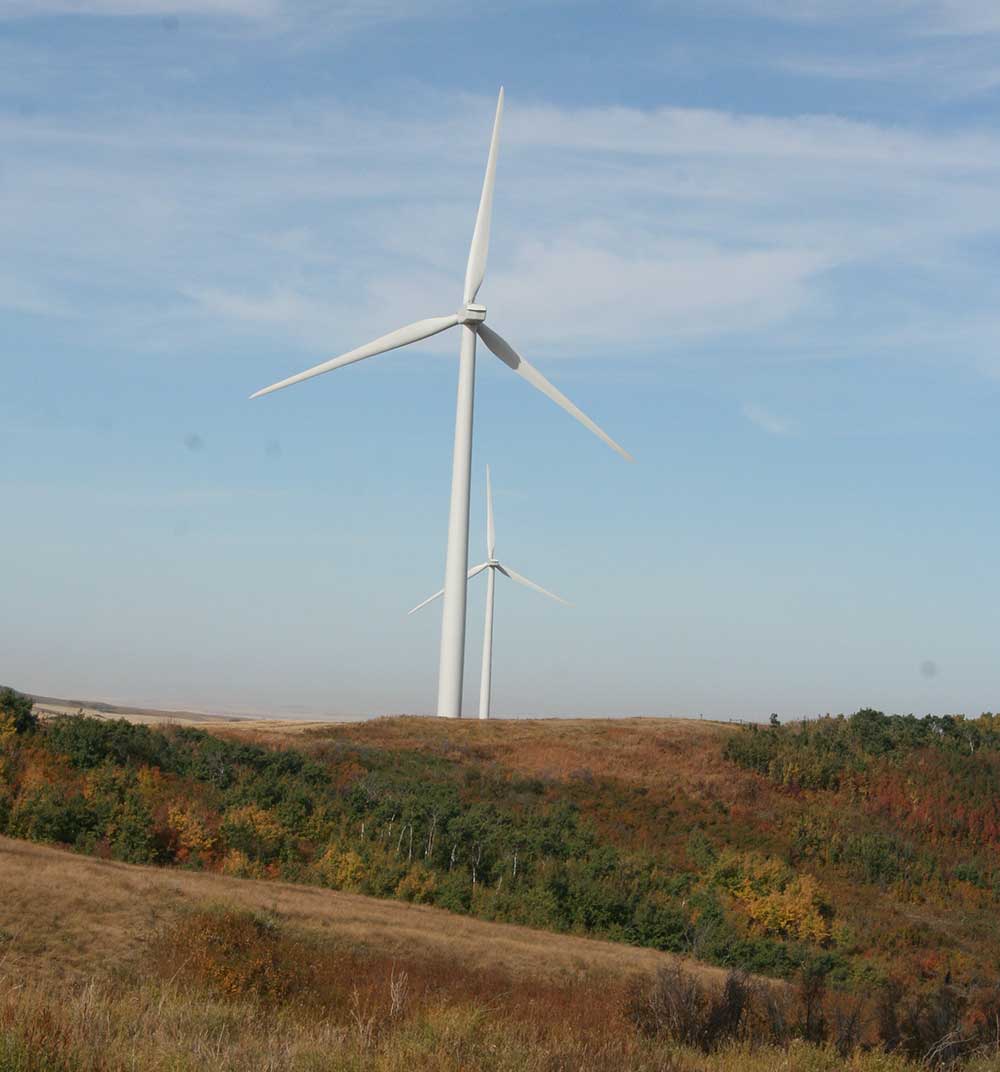Since its inception in 1989, the Prairie Conservation Forum has had an interest in minimizing the impacts of industries working in native prairie habitats. In the beginning, it was related to oil and gas exploration and development on native prairie, which led the PCF to draft information letters in 1992, 1996, and 2002, produce an occasional paper on ‘Minimizing the Effects of Oil and Gas Activity on Native Prairie in Alberta’ and an extension publication aimed at industry, government and the general public called ‘Prairie oil and gas: a lighter footprint’.
In the 2000’s, the PCF became more involved with the development of guidelines and recommendations for the renewable energy industry, specifically focused on wind energy development on native prairie. This work saw the development of ‘Minimizing Surface Disturbance of Alberta’s Native Prairie: Background to Development of Guidelines for the Wind Energy Industry’, and a wind assessment project that included a review of approaches to assessing appropriate placement of wind development and a workshop aimed at discussing the needs for tools to support decision-making around appropriate and sustainable development of wind energy facilities and associated infrastructure in prairie and parkland Alberta.
More recently, the PCF branched out to include beneficial management practices for more renewable energy industries in its ‘Beneficial Management Practices for Renewable Energy Projects: Reducing the Footprint in Alberta’s Native Grassland, Parkland and Wetland Ecosystems’ report. From this report, two information sheets were developed –one for renewable energy developers on ‘Reducing the Renewable Energy Footprint on Native Grasslands’, and one for Alberta landowners on ‘Reducing the Renewable Energy Footprint on Your Native Grasslands’.

